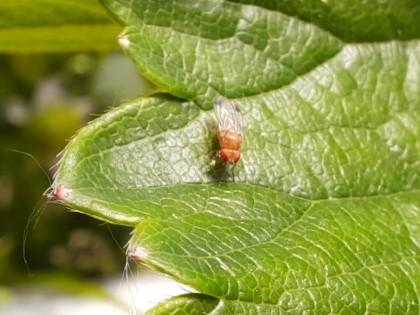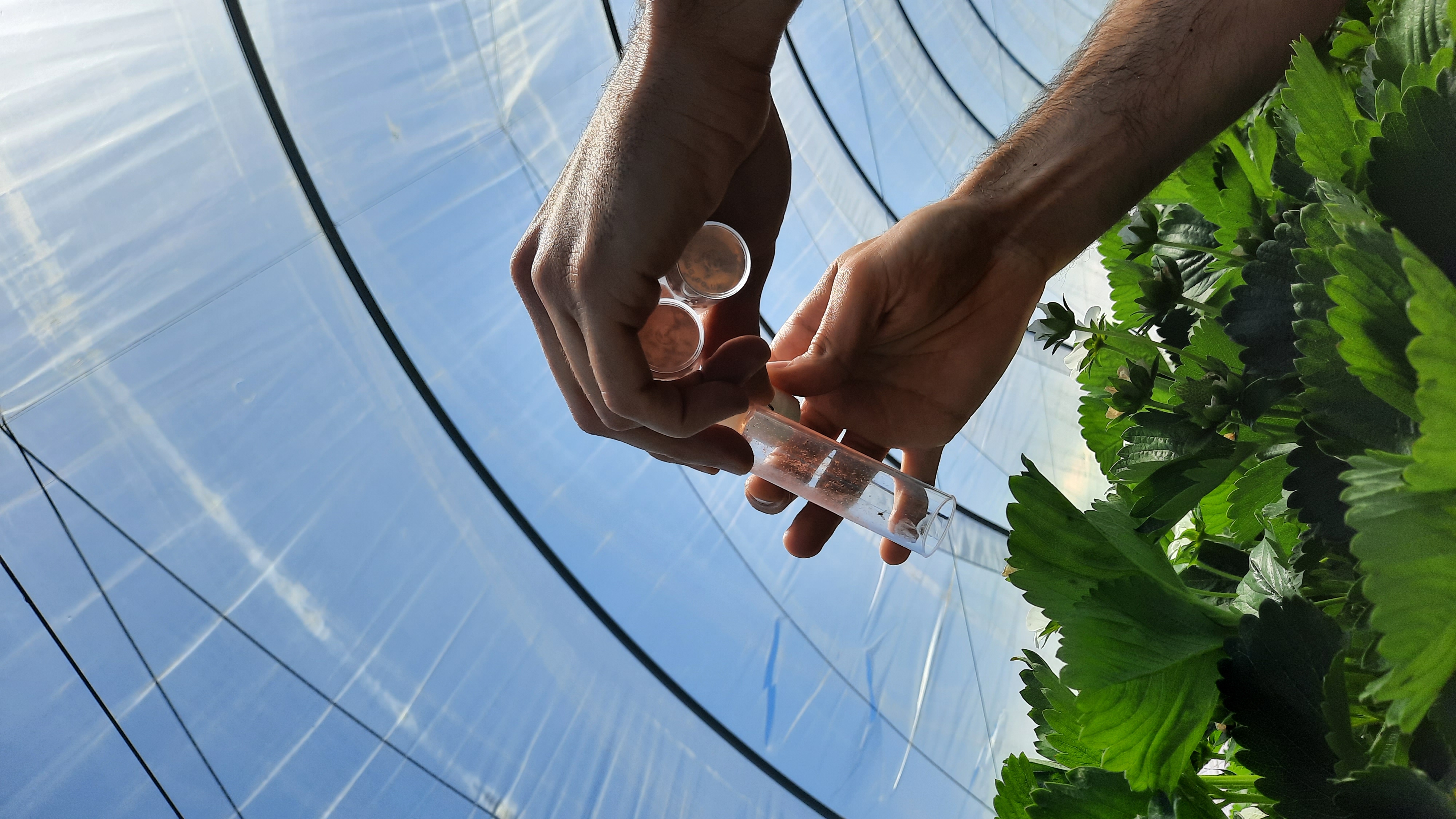- About
-
Research
- Agronomy and farming systems
-
Agricultural crop research
-
Research projects - agriculture
- About SASSA-SAI
- BioBoost
- Biomass Connect
- CTP for Sustainable Agricultural Innovation
- Climate Ready Beans - workshop presentations (March 2022)
- Crop diversity HPC cluster
- Designing Future Wheat
- Final project workshop
- Get involved
- List of materials
- News and updates
- Partners
- Rustwatch
- The Sentinel Crop Disease Surveillance Network
- The research team
- UK Cereal Pathogen Virulence Survey
- UK wheat varieties pedigree
- Weed management - IWM Praise
- Crop breeding
- Crop characterisation
- Data sciences
- Genetics and pre-breeding
- Plant biotechnology
- Plant pathology and entomology
- Resources
-
Research projects - agriculture
-
Horticultural crop research
-
Research projects - horticulture
- Augmented Berry Vision
- BEESPOKE
- Boosting brassica nutrition in smart growing systems
- CTP for Fruit Crop Research
- Develop user-friendly nutrient demand models
- Egg laying deterrents for spotted wing drosophila
- Enhancing the nutritional quality of tomatoes
- Improving berry harvest forecasts and productivity
- Improving vineyard soil health through groundcover management
- Intelligent growing systems
- Knowledge transfer for sustainable water use
- POME: Precision Orchard Management for Environment
- RASCAL
- STOP-SPOT
- UV-Robot
- Crop science and production systems
- Genetics, genomics and breeding
- Pest and pathogen ecology
- Field vegetables and salad crops
- Plum Demonstration Centre
- The WET Centre
- Viticulture and Oenology
-
Research projects - horticulture
- Crop Science Centre
- Research Projects
- Research Publications
-
Services
- Analytical Services
- Business Development
- Commercial trial services
- Membership
- Plant breeding
- Plant characterisation
- Seed certification
-
Training
-
Technical agronomy training
- Advanced crop management of bulb onions
- Advanced crop management of vegetable brassicas
- Advanced nutrient management for combinable crops
- Benefits of cover crops in arable systems
- Best practice agronomy for cereals and oilseed rape
- Developing a Successful Strategy for Spring Crops
- Disease Management and Control in Cereal Crops
- Incorporating SFI options into your rotation
- Protected Environment Horticulture – Best Practice
- Techniques for better pest management in combinable crops
- Crop inspector and seed certification
- Licensed seed sampling
-
Technical agronomy training
- News & Views
- Events
-
Knowledge Hub
- Alternative and break crops
-
Crop genetics
- POSTER: Diversity enriched wheat (2025)
- POSTER: Genetics of wheat flag leaf size (2024)
- POSTER: Wheat yield stability (2024)
- Poster: Traits for future cereal crops (2022)
- POSTER: wild wheat fragment lines (2022)
- POSTER: Improving phenotyping in crop research (2022)
- PRESENTATION: Plant breeding for regen ag
- Poster: Designing Future Wheat (2020)
- Crop nutrition
-
Crop protection
- POSTER: Understanding the hierarchy of black-grass control (2025)
- POSTER: Emerging weed threats (2025)
- POSTER: Disease control in barley (2025)
- Poster: Weed seed predation in regen-ag (2024)
- POSTER: Disease control in winter wheat (2025)
- POSTER: Mode of action (2023)
- POSTER: Inter-row cultivation for black-grass control (2022)
- POSTER: UKCPVS winter wheat yellow rust in spring 2025 (2025)
- Poster: Management of Italian ryegrass (2021)
- POSTER: UKCPVS winter wheat rusts - 2024/25 review (2025)
- POSTER: UKCPVS disease monitoring and the benefit to UK growers (2025)
- POSTER: Diagnosing and scoring crop disease using AI (2025)
- POSTER: Finding new sources of Septoria resistance (2024)
- POSTER: Fungicide resistance research (2024)
- POSTER: Detecting air-borne pathogens (2024)
- POSTER: Oilseed rape diseases (2024)
- POSTER: Fungicide resistance research (2024)
- POSTER: Improving chocolate spot resistance (2022)
- Poster: Pathogen diagnostics (2022)
- Fruit
- Regen-ag & sustainability
-
Seed certification
- POSTER: Wheat DUS (2024)
- POSTER: Innovation in variety testing (2024)
- POSTER: AI and molecular markers for soft fruit (2024)
- POSTER: Barley crop identification (2023)
- POSTER: Herbage grass crop identification (2023)
- POSTER: Herbage legume crop identification (2024)
- POSTER: Minor cereal crop inspecting (2023)
- POSTER: Pulse crop identification (2023)
- POSTER: Wheat crop identification (2023)
-
Soils and farming systems
- POSTER: Checking soil health - across space and time (2024)
- POSTER: Checking soil health - step by step (2024)
- POSTERS: Changing soil management practices (2022)
- Poster: Monitoring natural enemies & pollinators (2021)
- POSTER: Soil structure and organic matter (2024)
- POSTER: Novel wheat genotypes for regen-ag (2024)
- Video: New Farming Systems project (2021)
- Video: Saxmundham Experimental Site (2021)
- POSTER: Impact of prolonged rainfall on soil structure (2024)
- POSTER: Soil & agronomic monitoring study (2024)
- POSTER: The impact of rotations & cultivations (2024)
- VIDEO: Great Soils; soil sampling guidelines (2020)
- Poster: Soil invertebrates within arable rotations (2024)
- VIDEO: Soil health assessment (2021)
- POSTER: Saxmundham - modern P management learnings
- POSTER: Saxmundham - 125 years of phosphorus management
- Poster: Soil phosphorus - availability, uptake and management (2025)
- POSTER: Morley long term experiments (2025)
- POSTER: Exploiting novel wheat genotypes for regen-ag (2025)
- Video: Saxmundham Experimental Site (2021)
- Varieties
Recent advances in Spotted Wing Drosophila control in fruit crops

NIAB's Dr Michelle Fountain explains about some of the latest NIAB research on the invasive fly that changed the fruit industry...
Spotted wing drosophila (SWD, Drosophila suzukii) is a small vinegar fly specialised to exploit fruit by laying eggs in fruits which are not yet ripe, presumably reducing its competition with other species that are more adapted to laying eggs in ripe, overripe or even rotting fruit.
Consequently, SWD can accelerate the degradation of fruit before it is harvested in commercial crops, leading to massive crop losses, up to 90%, where controls are not in place.
The spread of SWD into major fruit growing regions of the world where it is not endemic has been enabled by the export of fruit initially from the region of origin in Asia and subsequently between non-native regions where SWD has established.
Early stages of invasion
SWD was first detected in the UK at NIAB’s horticultural research site at East Malling, Kent instigating an education and training campaign to alert fruit growers to the threat and how the pest might be controlled. Unfortunately, early control relied heavily on insecticide applications which disrupted well established biological controls for other pests.
Early on it was realised that insect excluding mesh, crop hygiene (removing non-marketable fruit from the cropping area), sanitary disposal of waste fruit, and frequent harvesting were essential to reduce both SWD numbers inside crops and the reliance on chemical insecticide treatments.
Innovation in SWD control
Recent NIAB research has demonstrated that SWD is not very competitive with other species which lay eggs in softer fruit and that SWD females are deterred from laying eggs where the larvae of another common Drosophila species, Drosophila melanogaster, are actively feeding inside fruit. This is an exciting discovery that could be exploited for future control once the ‘signal’ involved has been identified.
Many parts of Europe are now able to release commercially available parasitoids, e.g., Trichopria drosophilae, to contribute to the control of SWD, but as this species has not yet been identified in the UK, it is not currently approved for release.

Instead, NIAB focused on quantifying the contribution that UK native parasitoids have been making to SWD control. In non-cropped areas, native species may be contributing to around 21% control of SWD. However, these parasitoids are not common within fruit crops due to pesticide use and frequent fruit removal.
It is, however, possible to reduce populations in semi-natural habitats and crops in the spring, by mass trapping SWD in woodlands and hedgerows adjacent to crops throughout the autumn and winter. Although in temperate regions SWD does not lay eggs in the winter, it is often active and feeding on warm winter days.
This offers the opportunity to attract and trap the adult flies, in the absence of competing fruit, to minimise numbers of SWD locally at the beginning of the fruit growing season.
This strategy can give a good starting point to established technological approaches such as Sterile Insect Techniques (SIT) where wild populations of pests are controlled by releasing sterile males which outcompete the wild males and leave females infertile.
Repeated introductions of sterile males therefore help to keep SWD populations low throughout the season, which in combination with hygiene measures, can further reduce reliance on chemical insecticides.
NIAB have worked with commercial company BigSis to demonstrate the efficacy of this strategy. BigSis uses x-rays to sterilise flies rather than genetically-modified SIT technology, so its solution is approved for sale in England and four USA states.
Finally, NIAB also works with commercial company Russell IPM, and Microbiotech to develop SWD control strategies that combine reduced field doses of insecticides with baits attractive to SWD. Results show that using this strategy can reduce the amount of insecticide applied to an area in a single growing season by up to 95% resulting in less environmental contamination and lower residues in fresh produce.
The future of SWD control
SWD has presented the UK fruit industry with a major challenge. However, by working with overseas researchers, innovative companies and fruit growers, and investing in research and development, solutions to the control of this pest have been developed.
As with many native and invasive pests, the reliance on one control approach rarely offers reliable control as the pest changes in its response to climate, different fruit varieties and crop management practices. Hence, the industry needs to collaborate with researchers to tackle emerging changes in SWD adaptation and population fluctuations.
Future research should focus on complementary control strategies as part of Integrated Pest Management and on the automation of control. The aim is to reduce the reliance on labour, whilst creating new skills and techniques in the industry that are able to react to changing pest and disease pressures in crops, including remote sensing and data interpretation.
The research detailed in this article was funded by BBSRC, Innovate UK, The Worshipful Company of Fruiterers and AHDB.





